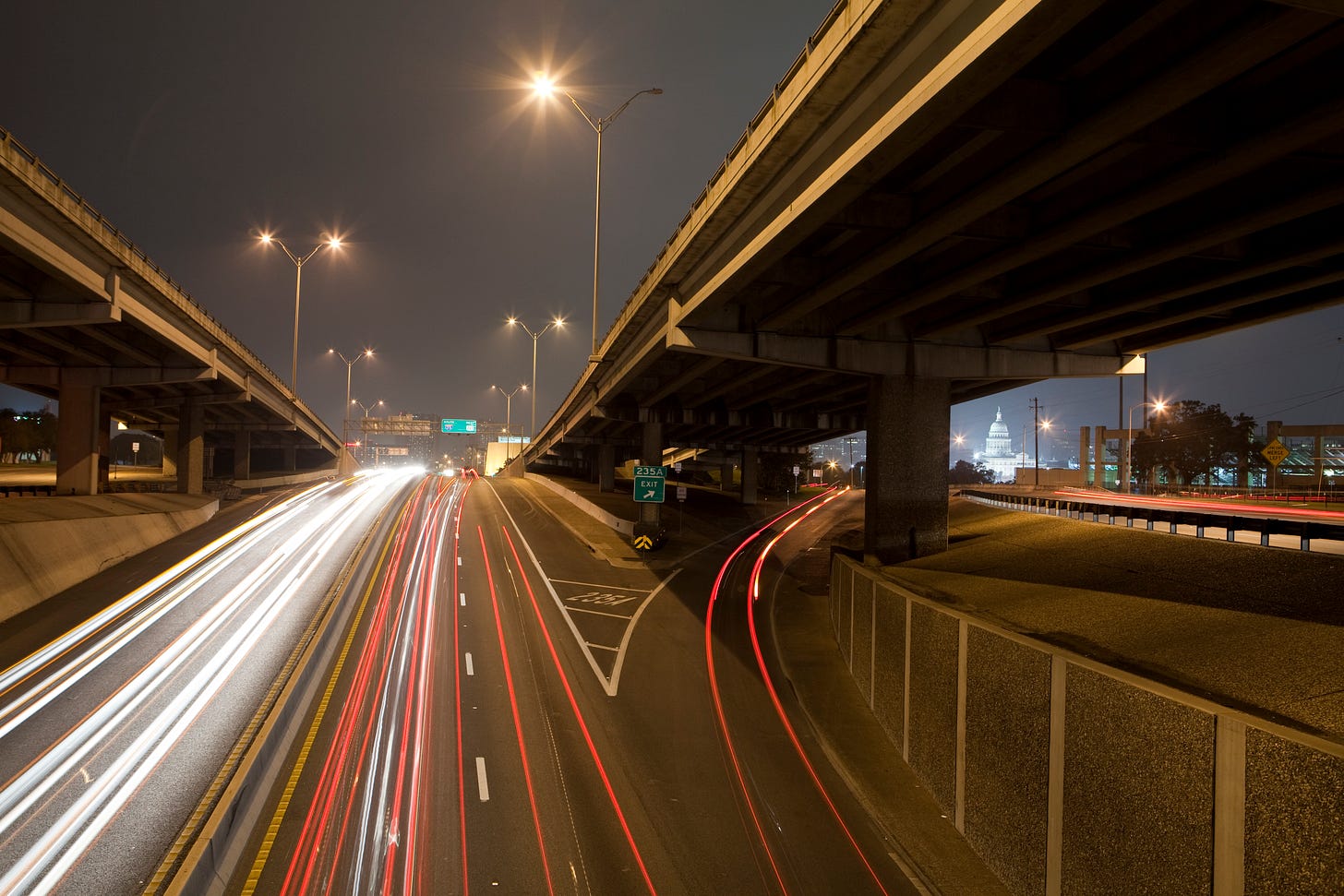
1. Induced Demand
I might be the only person at The Bulwark who has written about the transit theory of induced demand multiple times.
Mmmmmm. Can’t get enough civil engineering content . . .
Anyway, here are my friends at the New Atlantis with a big piece on Austin’s highway expansion and the fight over induced demand:
Interstate 35 through Austin, Texas, is the most congested stretch of road in the fastest-growing city in one of the sprawliest states in the country.
Yet the Texas Department of Transportation’s plan to expand the highway starting this year faces opposition from a well-organized contingent of local activists. They argue that the expansion will fail to reduce congestion because it will only coax more drivers onto the road — an effect known in urban and transportation policy circles as “induced demand.”
[T]hey are part of a nationwide movement aiming to limit highway construction that has gained strength in recent years.
The controversy extends well beyond the question of whether highway expansion reduces congestion — it’s part of a low-level culture war over how cities should form and grow. On one side are urbanists who favor denser cities, public transportation, and walkable neighborhoods. On the other side are — well, on these matters there is not really another side. It’s sort of a one-sided war. No one actively opposes walkable neighborhoods or reliable transit. No one thinks it would be terrible if the United States had beautiful, charming cities like Venice.
But there is a war over priorities. Urbanists see their vision as fundamentally at odds with highway expansion, which they consider a threat to safety, tranquility, and the health of the globe. Meanwhile, the proponents of the I-35 expansion are generally business and government leaders who see expanding highways as a straightforward necessity for accommodating traffic in a growing city. They, too, appreciate walkability and beauty in theory, but do not see cities like Austin becoming Venice anytime soon . . .
The reason that congestion receives so much attention in this war is because it is where the model of car-oriented development is vulnerable. No one likes sitting in traffic.
When it comes to transportation policy, there are just two kinds of people: Urbanists and parents.
Okay, that’s overly reductive. There are also NIMBYs and YIMBYS and Chamber of Commerce types. And sure, some urbanists are also parents.
But in general, urban planning comes down to two competing worldviews:
Urbanists who want denser housing, fewer cars, and more mass transit.
And parents who want single-family homes, backyards, and ready access to all of the necessities of family life: doctors, grocery stores, childcare, good schools, rec soccer, and—this is the big one—JOBS.
What do you need in order to get on-demand access to the maximum array of each of those goods?
A car.
The theory of induced demand is that, as the New Atlantis piece puts it, “rush-hour congestion inexorably rises to the level of a highway’s capacity.”
Meaning that it doesn’t matter how much carrying capacity any road has: There will always be traffic. But this is a category error.


